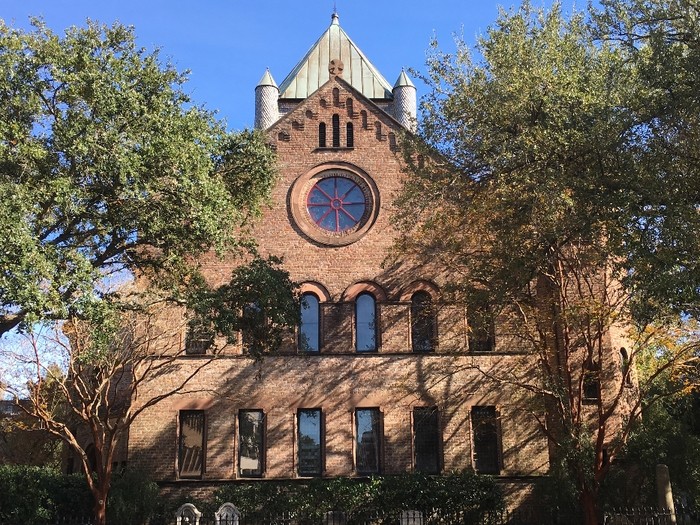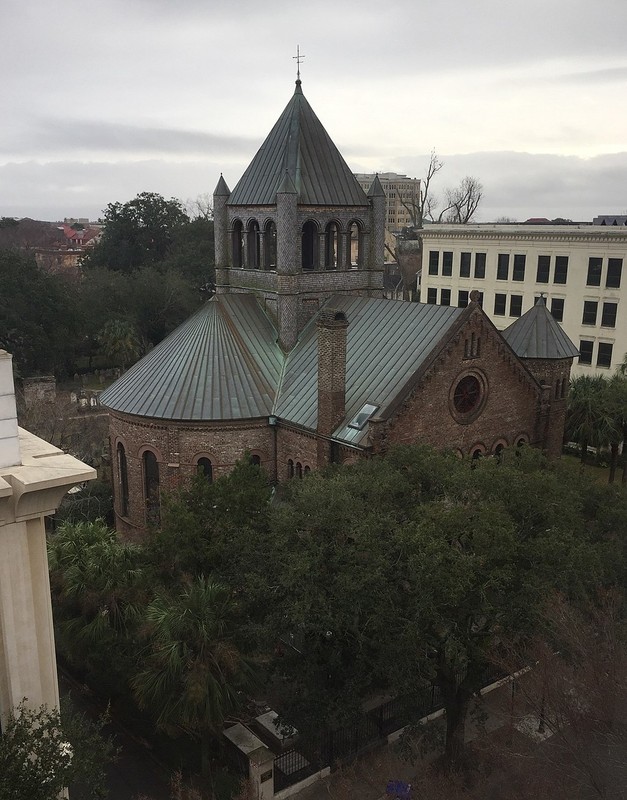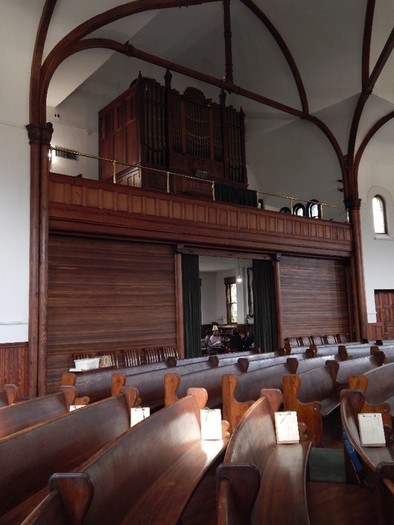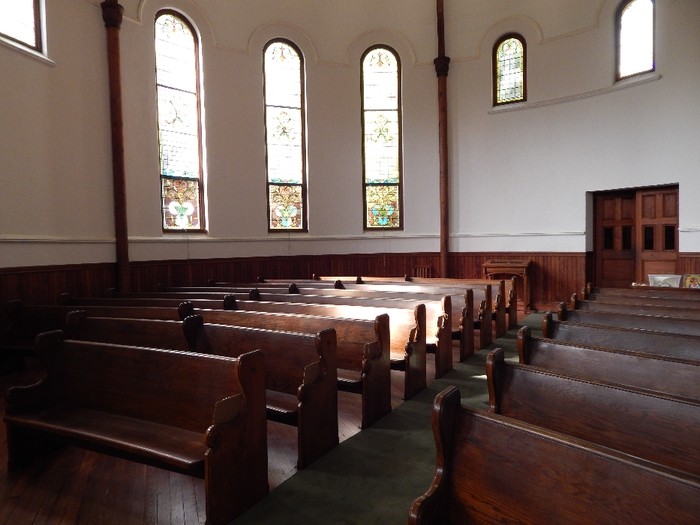Circular Congregational Church
Introduction
Text-to-speech Audio
Images
Circular Congregational Church was founded in 1681, making it one of the oldest in the South. The present church was built in 1892.




Backstory and Context
Text-to-speech Audio
The church and the city of Charleston (originally called Charles Towne) were both established in 1861 by the settlement's first residents whos English Congregationalists, Scots Presbyterians, and French Huguenots. The church was founded at this location. The first sanctuary did not have an official name but was sometimes referred to as Presbyterian, Congregational, or Independent. Nothing remains of the original church but an arched tomb dating to the early 1690s does still exist.
It is unclear when the second church was built but it occurred some time before 1732 when it was expanded. This was a year after some members left to start their own, more conservative congregation nearby. Those who remained continued to espouse a philosophy independent thought. Given this environment, the church became a hotbed for revolutionary dissent against the British. In the years leading to the American Revolutionary War (1776-1783), its minister, William Tennent, preached about political and religious freedom in his sermons. The British captured Charleston in 1780 and during the attack a cannonball landed in the graveyard during church services. The British forced many families of the church into exile in Philadelphia used the church as a hospital. After the British evacuated the city, the congregation returned and rebuilt the church (they also built another church in 1787 on Archdale Street to accommodate the growing size of the congregation).
By the early 1800s, the church had become too small. As a result, the congregation built the third church at this location, the famed Circular Church designed by Robert Mills. It was 88 feet wide and could, apparently, fit 2,000 worshippers. When completed, it was the first major domed structure in North America. A steeple was added in 1838 after years of the church being the made fun of for not having one. The church was also notable for having a Black and white congregation from 1820 to 1860. Many members were prominent individuals including governors and state senators. As mentioned above, the church was destroyed by a fire in 1861, which laid waste to much of the city. The Civil War prevented the congregation from rebuilding and the Black members formed their own church in 1867. It wasn't until 1890 that the congregation began the effort to build the present church.
Lance Hall, which is also known the Parish House, was built around 1806. The graveyard contains hundreds of burials, 450 or which date before 1800. The church is listed on the National Register of Historic places.
Sources
"A Brief History of the Circular Church." Circular Congregational Church. Accessed February 22, 2021. https://www.circularchurch.org/history.
"The Independent or Congregational Church of Charlestown Founded 1681." The Historical Marker Database. Accessed February 22, 2021. https://www.hmdb.org/m.asp?m=121855.
Stephenson, Tray & Kearse, Bernard. "The Circular Congregational Church and Parish House." National Park Service - National Register of Historic Places Nomination Form. https://npgallery.nps.gov/NRHP/GetAsset/NHLS/73001683_text.
Circular Congregational Church: https://www.circularchurch.org/Historic-Venue
Wikimedia Commons: https://commons.wikimedia.org/wiki/Category:Circular_Congregational_Church
